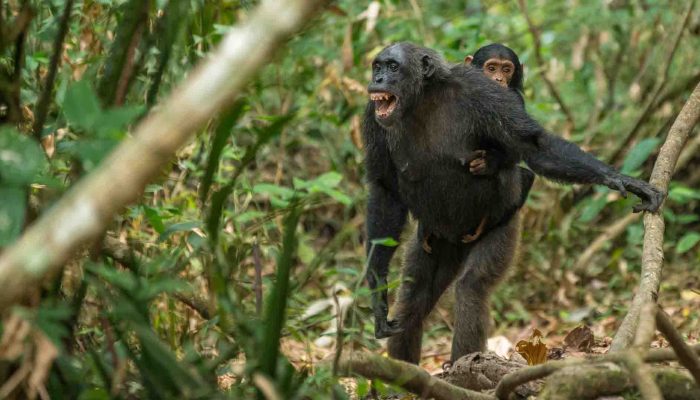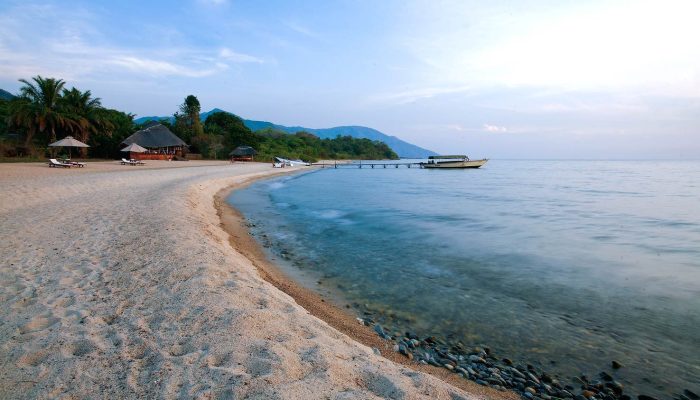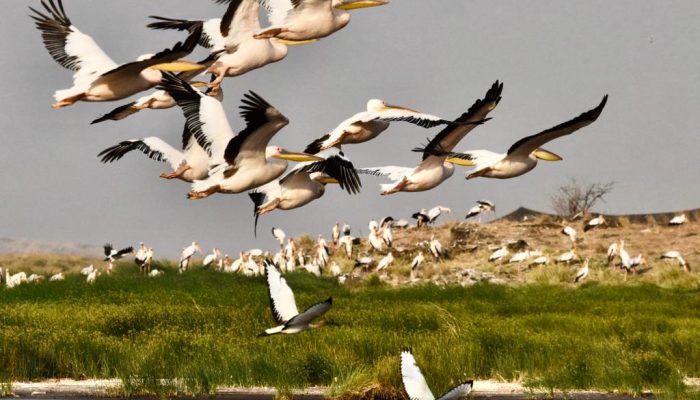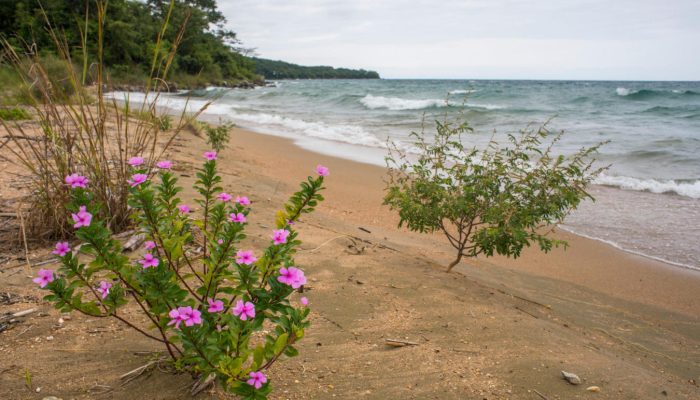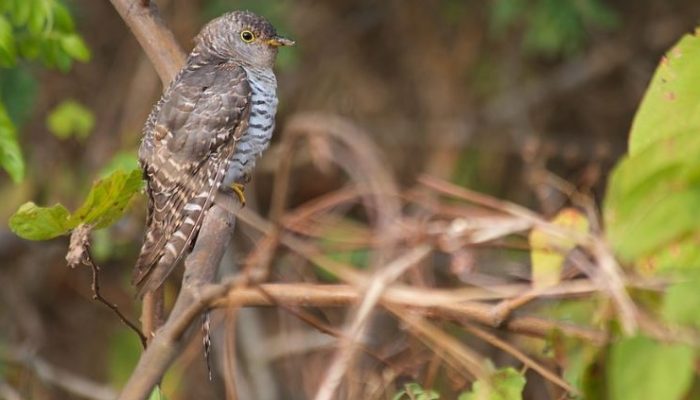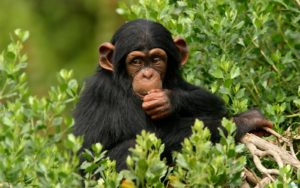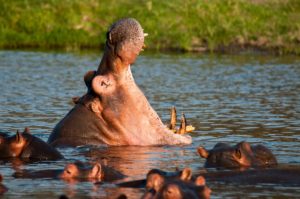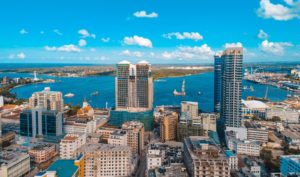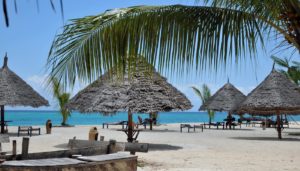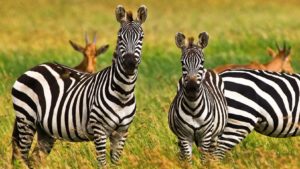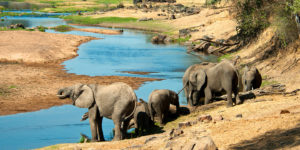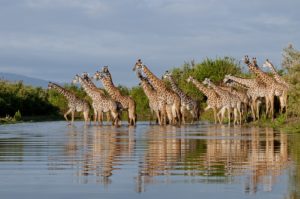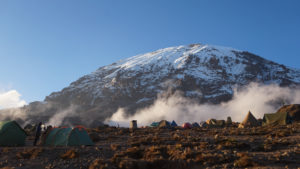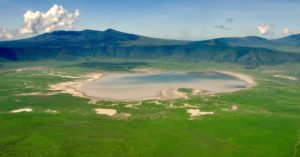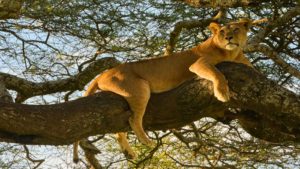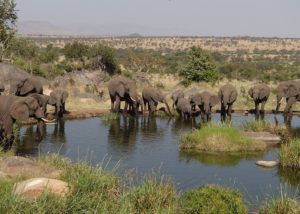Mahale Mountains National Park
Mahale contains at least world’s largest protected population (approx. 700-1000) of the eastern subspecies of Chimpanzee. The area contains at least 337 bird’s species, many of which are rare and endemic to the Albertine Rift. E.g. Pel’s fishing owl.
One of the unusual things about mahale is the wide variety of habitat types that it contains. The park is a mosaic of overlapping rainforest, woodland, bamboo forest, Montane forest and mountain grasslands, meaning that mahale can support a unique mix of flora and fauna that rely on the various different habitats.
Mahale contains 8 (Possibly 9) primates in addition to chimps; these are yellow baboons, blue monkeys, red colobus, pied colobus, and vervet monkeys two or three species of Galago.
Lake Tanganyika, which is part of Mahale, is both the world second longest and second deepest freshwater lake being 673 in length and 60-80km in width. The fresh water fish fauna of Lake Tanganyika is one of the most diverse in the world. The Lake is home to at least 400 species of fish, about 250 of which are cichlids, and 98% of which are endemic (the occur nowhere else on earth).
TOURIST ATTRACTIONS
The Chimpanzees, Chain of Mountains (Mahale range), Forest fauna and flora (Angola colobus, red colobus, red-tailed and blue monkeys, forest birds, alpine bamboo, montane rain forest etc), Beach along Lake Tanganyika, Local fishermen, and Sun set on the Lake horizon
WHAT TO DO
Chimp tracking (allow two days), Hiking to the Park’s highest point “Nkungwe” (8,069ft) held sacred by the local Tongwe people, Camping safaris, Snorkeling, Sports fishing, and many more water sports activities.
